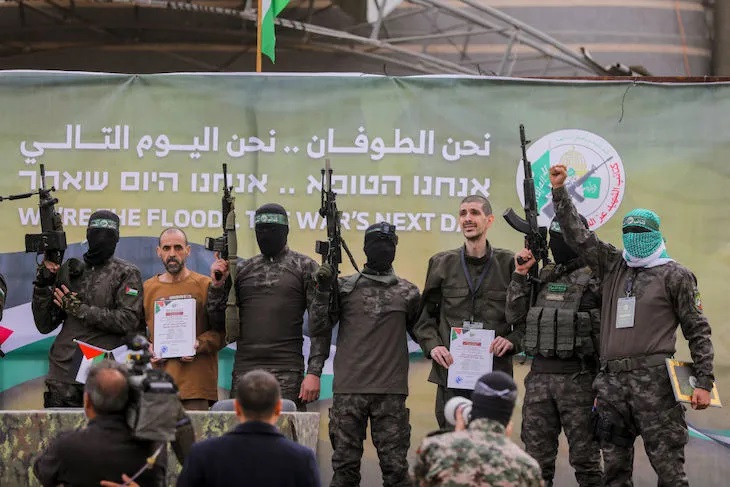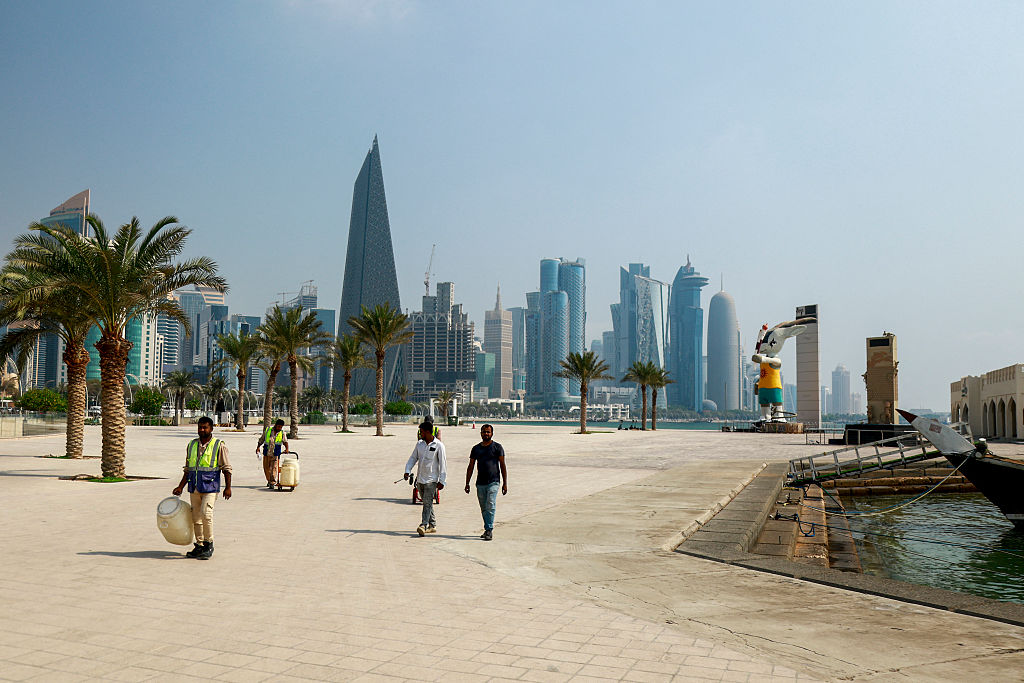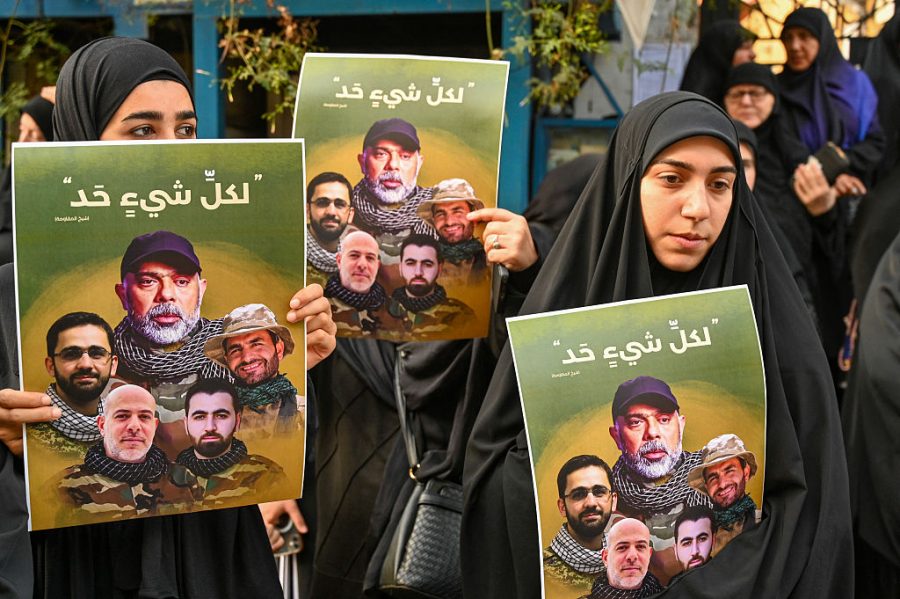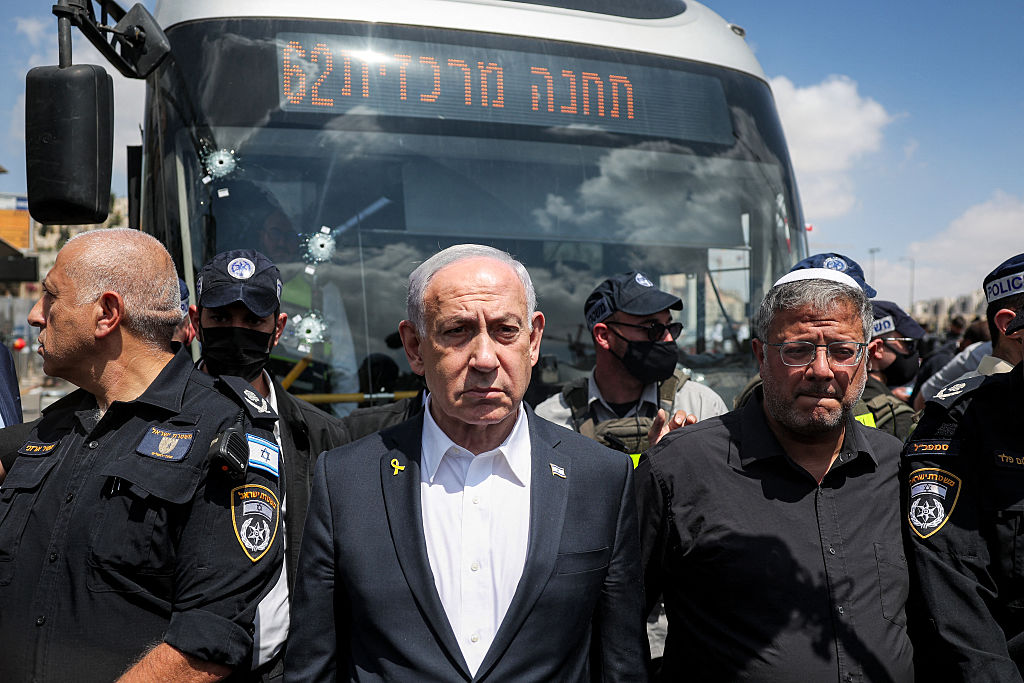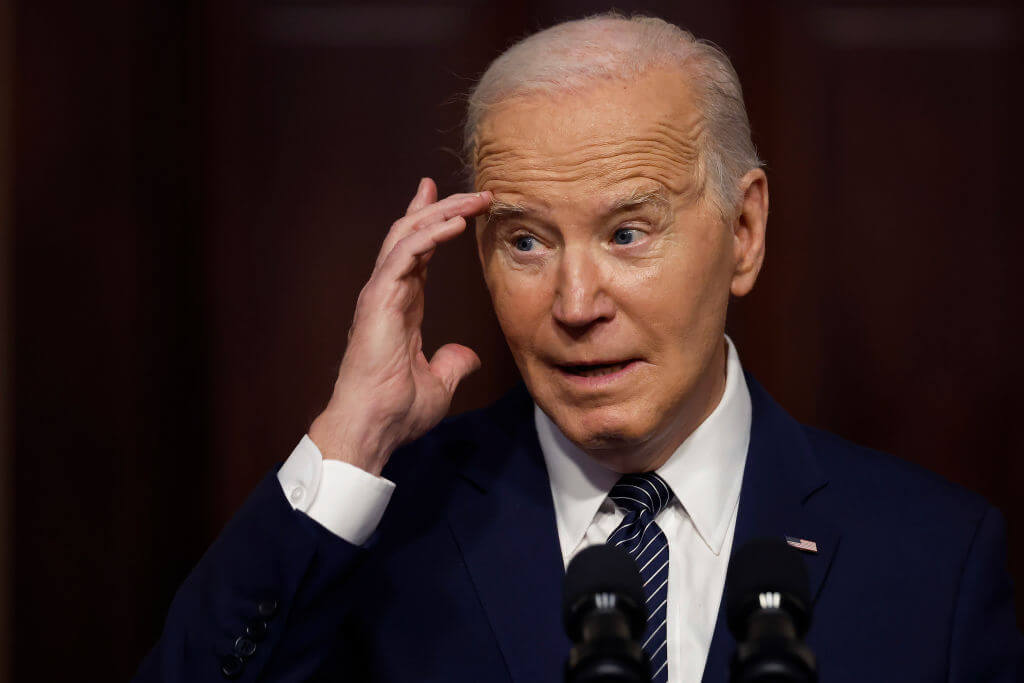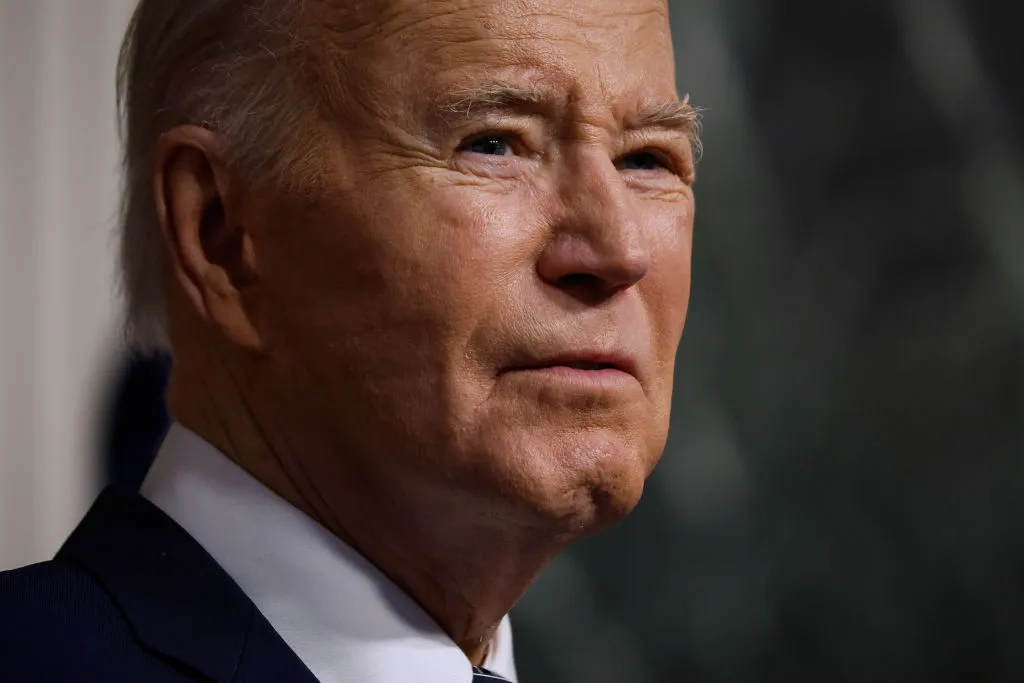We asked for proof of deliberate starvation in Gaza. On Saturday, we received it. The images of Eli Sharabi, Or Levy, and Ohad Ben Ami — three hostages released by Hamas after 491 days in captivity — were haunting. Frail, skeletal, barely able to stand, they bore the unmistakable marks of prolonged deprivation. The sight evoked painful historical echoes: men whose suffering was etched into their hollowed faces and emaciated bodies, a vision chillingly reminiscent of Holocaust survivors. This was not incidental malnutrition. It was something far worse: starvation as a weapon, inflicted with intent.
It was a vision chillingly reminiscent of Holocaust survivors
For months, famine in Gaza had been reported with urgency by major news outlets, but the images accompanying these reports had often been strangely inconsistent with the severity of the claims. Some pictures did show children looking thin. But many images were unverified, and some were later revealed to be children suffering from pre-existing medical conditions that had caused their wasting. There were too many gaps, too many doubts. On Saturday, there was no ambiguity. The world saw what true, deliberate, sadistic starvation looks like.
The contrast was stark. The Hamas terrorists escorting the hostages looked well-fed, as did the civilians who gathered to jeer at the released men and to scatter confetti. Some were positively fat. Hamas had the means to sustain these captives: it chose not to. Their condition was not an accident of war but a deliberate act of cruelty.
The physical condition of the hostages told only part of the story. Their testimonies have begun to reveal the true extent of the suffering they endured. Or Levy and Ohad Ben Ami described brutal interrogations in which they were subjected to relentless torture: hanging upside down by their feet, strangled, gagged to the point of suffocation, and even branded with burning objects.
They were kept barefoot throughout their captivity, left alone for long stretches in suffocating, cramped conditions deep within Hamas’ tunnels, unable to stand or move freely. They were deliberately starved, at times receiving nothing at all for days on end; when they were given food, it was often little more than rotten scraps of pita bread, which they had to share among multiple prisoners.
Even water was withheld for long periods. “We were treated like animals,” one of them said. Only in the final days before their release did their captors begin to offer slightly more sustenance — just enough to ensure they could remain upright long enough for the cameras. It was not just cruelty, but calculated and systematic dehumanization, inflicted over 491 days of captivity.
Yet even as these horrors were made plain, efforts to distort the narrative were already underway. Almost immediately, social media accounts circulated an image of a Palestinian “prisoner,” allegedly released from Israeli custody in an even more skeletal state. But upon closer examination, serious doubts emerged — the “before” and “after” images appeared to show different men, with the “after” image reportedly depicting a man suffering from cancer months earlier. Additionally, the name attributed to this individual did not appear on official prisoner release lists.
While real cases of hardship exist, the timing and apparent orchestration of this claim suggested a different purpose: to create a false equivalence, to muddy the waters, to shift focus away from the undeniable truth of Hamas’ crimes. The BBC’s Laura Kuenssberg pressed Israeli president Isaac Herzog over how the convicted Palestinian terrorists Israel had been forced to free from jail had been treated; it was a shameful attempt to create equivalence, as he pointed out.
If anyone believes that the shock at the sickening spectacle of Saturday’s release will prompt Hamas to change course, they are likely to be mistaken. This was not a miscalculation. It was not a public relations failure in their eyes. Hamas never sought to hide its brutality: it has only been elements of the press and biased international NGOs that have done so.
The International Criminal Court’s chief prosecutor, Karim Khan, announced in May that he would seek arrest warrants for Israeli prime minister Benjamin Netanyahu and former defense minister Yoav Gallant, making them the first individuals to be formally accused by an international court of “deliberate starvation.” That accusation — one of seven charges brought against them — was swiftly celebrated in certain circles as proof of Israel’s guilt. Yet, as we watched Hamas parade its captives in a state of near-death, it became impossible to ignore the deep and bitter irony: the most clear-cut, deliberate starvation in this war has been that which Hamas inflicted on those it abducted and sadistically tortured.
For months, much of the international media has shaped the narrative of this war in a way that often seemed to erase Hamas from the equation altogether. Reports from Gaza have frequently featured Israeli soldiers but few, if any, images of Hamas gunmen. The war has been presented as a struggle between a modern military and a helpless population, as if Hamas were not an active and deliberate participant in its own people’s suffering. But the evidence is now undeniable. The starvation of these hostages was not the result of siege, nor the outcome of limited resources. It was a strategy. Hamas wanted the world to see these men reduced to such a pitiful state. Their suffering was intended as a message, their broken bodies displayed not in shame, but in triumph.
This will not be the last time. Hamas will continue to release hostages in increasingly desperate conditions. Eventually, they will release corpses. When they do, what will the apologists say then? How will the narrative shift to accommodate the sight of dead men, women and children, wasted to the bone, after months in captivity?
Once again, it fell to President Donald Trump to say out loud what clear-minded, fair people around the world were thinking. “I watched the hostages come back today. And they looked like Holocaust survivors. I don’t know how much longer we can take that…We’re going to lose our patience.”
That is the truth Hamas wanted the world to see: proof of their cruelty, worn on the faces and bodies of those they tormented. The sooner every hostage is freed and Hamas is entirely eradicated, the better.



